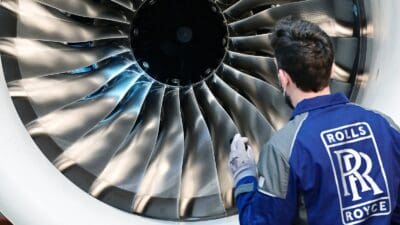Accountancy software group Sage (LSE: SGE) and pharma firm AstraZeneca (LSE: AZN) are two FTSE 100 stocks whose valuations are far too high, in my opinion. Here’s why I’d be happy to sell these stocks today, and look for lower-rated businesses with greater margins of safety.
Sagging Sage
Investors in Sage endured a torrid 2018. The share price reached highs of over 820p in the first weeks of the year, but by late October had slumped to a low of 525p. However, we’ve since seen a massive rally. This has taken the price back towards 800p (790p, as I’m writing).
When the shares were last at this level, Sage had guided on an acceleration in organic revenue growth to 8% (from 6.6%), moving towards a medium-term target of 10%, while maintaining an organic operating margin of at least 27%.
Should you invest £1,000 in TUI right now?
When investing expert Mark Rogers has a stock tip, it can pay to listen. After all, the flagship Motley Fool Share Advisor newsletter he has run for nearly a decade has provided thousands of paying members with top stock recommendations from the UK and US markets. And right now, Mark thinks there are 6 standout stocks that investors should consider buying. Want to see if TUI made the list?
The acceleration hasn’t materialised, with 6.6% posted in fiscal 2018 and 6.2% in the first half of this year. Meanwhile, the current margin target is 23% to 25%, because the new chief executive has ramped up investment in product and innovation.
Competition
Sage was late to recognise an industry shift towards cloud-based solutions, which are easier to install and update. As such, some cloud-only rivals have superior offerings at lower prices. This makes it hard for Sage to win new customers without reducing its pricing and continuing to invest in product and innovation. Because of this, I think the old targets for revenue growth (10%) and margin (at least 27%) are likely gone for good.
In the circumstances, a rating of 26 times current-year forecast earnings looks far too rich to me, and a prospective dividend yield of 2.2% doesn’t set my pulse racing. I see better value elsewhere in the market.
Rotten core
AstraZeneca’s shares hit a new all-time high earlier this month, and a current price of 6,378p is only a couple of percentage points off the peak. On the face of it, the rating isn’t as high as Sage’s. Its guidance for current-year core earnings per share of $3.50 to $3.70 gives a multiple of 22.5 (at the guidance midpoint and current exchange rates). However, I take issue with the company’s ‘core’ earnings measure.
In recent years, it’s been disposing of older drugs it no longer considers core. However, the one-time-only profits on these non-core asset disposals are included in its ‘core’ earnings numbers. I calculate this has boosted annual core earnings by between 20% and 33%. As such, I put the real forward earnings multiple at upwards of 28 (versus 22.5 on the company’s ‘core’ guidance).
Under pressure
AstraZeneca has maintained an annual dividend of $2.80 (220.5p at current exchange rates) for a good number of years, giving a running yield of 3.5% at today’s share price. However, operating cash flow has barely been enough to cover capital investment over the last five years. Effectively, the company has been borrowing money to pay shareholders.
Two days after paying out the latest dividend ($2.4bn gross), the board announced a placing to raise $3.5bn. Part of the purpose of this was “to improve the company’s overall balance-sheet strength and liquidity.”
As such, the board’s ‘core’ earnings measure masks not only what I consider to be a sky-high real earnings multiple, but also an under-pressure dividend and balance sheet. Like Sage, AstraZeneca does have growth prospects, but again I feel the current valuation is far too rich.







